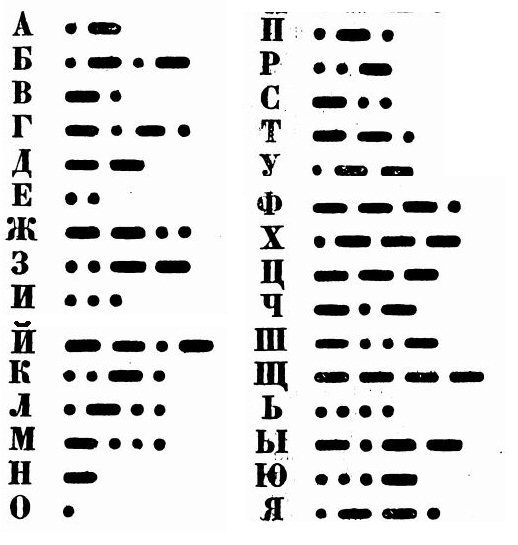Friday, July 26, 2019
A couple of 1854 items
From Shaffner's Telegraph Journal, which served and defended the Morse company in the same way that Electrek.com now serves and defends Tesla.
First, a distinctly Tesla-like puff piece for the 'Atmospheric Dispatch':
 The 'lesser alphabet' isn't a familiar concept. In 1918 the Soviets simplified the alphabet by removing Ѣ and Ꙇ and Ѳ which were non-phonemic equivalents for Е and И and ф. This 'lesser alphabet' tosses those three characters, and also omits Ъ and Ё and Э. Russian could get along fine without Ъ and Ё, which aren't really phonemic, but Э is more useful.
So the Soviet simplification must have been a compromise between the 'full' and 'lesser' alphabets. The decision to discard Ꙇ and Ѳ would have been automatic, because those were used mainly in Greek religious words. Tossing Ѣ was sensible, but leaving Ъ and Ё intact seems arbitrary.
The 'lesser alphabet' isn't a familiar concept. In 1918 the Soviets simplified the alphabet by removing Ѣ and Ꙇ and Ѳ which were non-phonemic equivalents for Е and И and ф. This 'lesser alphabet' tosses those three characters, and also omits Ъ and Ё and Э. Russian could get along fine without Ъ and Ё, which aren't really phonemic, but Э is more useful.
So the Soviet simplification must have been a compromise between the 'full' and 'lesser' alphabets. The decision to discard Ꙇ and Ѳ would have been automatic, because those were used mainly in Greek religious words. Tossing Ѣ was sensible, but leaving Ъ and Ё intact seems arbitrary.
During our recent trip to Boston, we visited the rooms of the Atmospheric Dispatch Company, No. 24 Merchants' Exchange, State Street. We had but little confidence in the practicability of the enterprise, prior to an examination of the machine and witnessing its operation. The tubes were made of lead, about two inches in diameter, and about twenty feet long. The feasibility of the invention for the uses designed was demonstrated by various experiments. Although the operation seemed to be perfect, yet we entertained doubts as to the ultimate success of a long line; but Mr. I. S. Richardson, the talented inventor, readily presented arguments, based upon fixed laws in philosophy, dispelling all fears. The Atmospheric Dispatch Company contemplate constructing a line from Boston to Worcester, as the first section of a line to New York. The shares are $100 each, payable in calls of ten per cent, commencing on the 1st of February, 1854. Total capital stock, $500,000. The tube to be two feet in diameter, for conveying letters and packages to and from the said cities and intermediate places, allowing fifteen minutes to each transit. Although we feel confident of successful results from the art invented, yet we cannot believe in the realization of all the hopes entertained by the worthy and ingenious inventor. If it accomplishes one half, the triumph will be great. The achievement will rival in brilliancy the brightest star of this progressive age. It will be one of the most marvellous and resplendent gems that bedeck tho illustrious escutcheon of American ingenuity.The non-functional device and the Hallelujah tone and the stock pump are all too familiar. Of course the device itself ultimately became practical and common for document transfer within one building. It was still used in department stores and office buildings in the 1950s. Elon conveniently forgets this earlier practicality. ... And a quick check of Youtube surprised me. Pneumatic tubes are still a modern and active technology in some situations! The new ones look just like the old ones. = = = = = More interesting: The journal includes some of the foreign Morse alphabets as they existed in 1854. The Russian code is introduced thus: We next append the Russian-Morse Alphabet, arranged for the lesser alphabet in that language, being six less than the full Russian.
 The 'lesser alphabet' isn't a familiar concept. In 1918 the Soviets simplified the alphabet by removing Ѣ and Ꙇ and Ѳ which were non-phonemic equivalents for Е and И and ф. This 'lesser alphabet' tosses those three characters, and also omits Ъ and Ё and Э. Russian could get along fine without Ъ and Ё, which aren't really phonemic, but Э is more useful.
So the Soviet simplification must have been a compromise between the 'full' and 'lesser' alphabets. The decision to discard Ꙇ and Ѳ would have been automatic, because those were used mainly in Greek religious words. Tossing Ѣ was sensible, but leaving Ъ and Ё intact seems arbitrary.
The 'lesser alphabet' isn't a familiar concept. In 1918 the Soviets simplified the alphabet by removing Ѣ and Ꙇ and Ѳ which were non-phonemic equivalents for Е and И and ф. This 'lesser alphabet' tosses those three characters, and also omits Ъ and Ё and Э. Russian could get along fine without Ъ and Ё, which aren't really phonemic, but Э is more useful.
So the Soviet simplification must have been a compromise between the 'full' and 'lesser' alphabets. The decision to discard Ꙇ and Ѳ would have been automatic, because those were used mainly in Greek religious words. Tossing Ѣ was sensible, but leaving Ъ and Ё intact seems arbitrary.Labels: Alternate universe, Language update, Morsenet of Things
